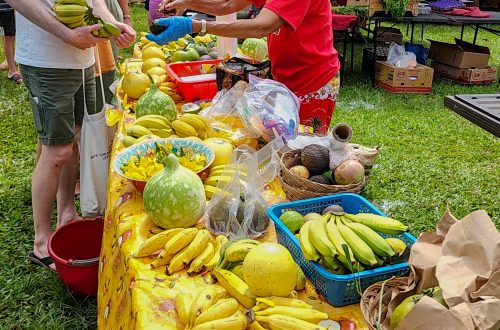
A Buzz with Flavor: Cooking with Bourbon
When I first moved to Boston and began cooking for others on a regular basis, one of my go-to desserts was a bourbon pie featured in the New York Times Large Type Cookbook. As I think of it, my other forays into the use of alcohol in cooking were also concentrated in desserts such as my strawberry Chablis mousse. It took me a few years and some serious cooking to figure out the chemistry of alcohol in cooking, and I’m still learning. I have a bottle of red wine and a bottle of white wine at hand for regular cooking duties, and I often use beer in my chili and other stew recipes.
I’ve also developed a rich appreciation for brown liquor in recent years, and I have a good collection of single-malt scotches and several fine bourbons. An interesting take on an old fashioned while we were out to dinner last week prompted me to wonder: Why not use bourbon in cooking? I was happy to learn that higher-proof liquors can indeed enhance your dishes, thanks to the chemistry of alcohol.
Distilling the essence
We all know that oil and water don’t mix. But alcohol bonds with both fat and water molecules. As the alcohol evaporates, it carries to your olfactory sensors in your nose, where a bulk of the appreciation for the flavor of a dish is transmitted to your brain. Because your taste receptors respond only to fats, you will typically miss some of the flavors coming from your dish. Adding alcohol means those flavors can be transported back to the fats. In short, you get the full flavor. It’s not unlike tasting food when you’re feeling great versus when you have a stuffy nose.
What I found in my research is that most recipes using bourbon are desserts and baked goods. That’s because it’s a good way to plump up raisins and other dried fruit or to extend the life of fresh fruits that are a little past their prime by macerating them in liquor. As for main dishes, I was not surprised to learn that most of the recipes were Southern in origin, focus on beef and pork, and involve barbecue. I did find a few ideas for chicken and fish, which suggest using white liquors such as rum and vodka. But for beef and pork, it’s bourbon that works its chemical magic in marinades and sauces. First, it takes advantage of the ability of alcohol, in low and moderate amounts, to break down the enzymes in meat. The low and slow cooking of barbecues and braises evaporates the alcohol while retaining its ability to hold the fat and water together during the cooking. And when the dish is done, alcohol, like salt, is a flavor enhancer.
Tips straight up from Kentucky
Here is some advice that I compiled, much of it from Whitney Fontaine, a chef who runs La Belle Du Sud in Louisville, Kentucky. First, use good bourbon (but not too much) instead of the cheap stuff. Start with a little as a substitute for the other liquid in the dish, and then add more as you wish. Too much will cause the fat and water to coagulate too quickly and ruin the flavor. But don’t use too little, either. You can also add a little acid such as vinegar or lemon juice to balance the flavor. Taste and adjust as you go. You may also need to adjust your cooking times and temperatures.
Here are some examples of recipes using bourbon, starting with beef brisket with bourbon and bacon peach glaze, featured in the photo at the top of this blog. I roasted it in a low and slow oven for 3 1/2 hours instead of the recommended sous vide, and, still, it was outstanding. Then I’m going to try pulled pork with spicy peach mustard sauce or maybe this bourbon chicken. And next time we’re entertaining, I might try this bourbon acorn squash recipe or butterscotch-bourbon macadamia nut pie. Now that looks rich.
How about you? Do you cook with liquor? What’s your favorite recipe?
To comment, please click on “Read in Browser” or on the headline to view the blog on the website. You can log in and comment at the end of the blog to share your thoughts and start a discussion.
If you’d like to share the blog, click on the Facebook icon or one of the others. Thanks!




